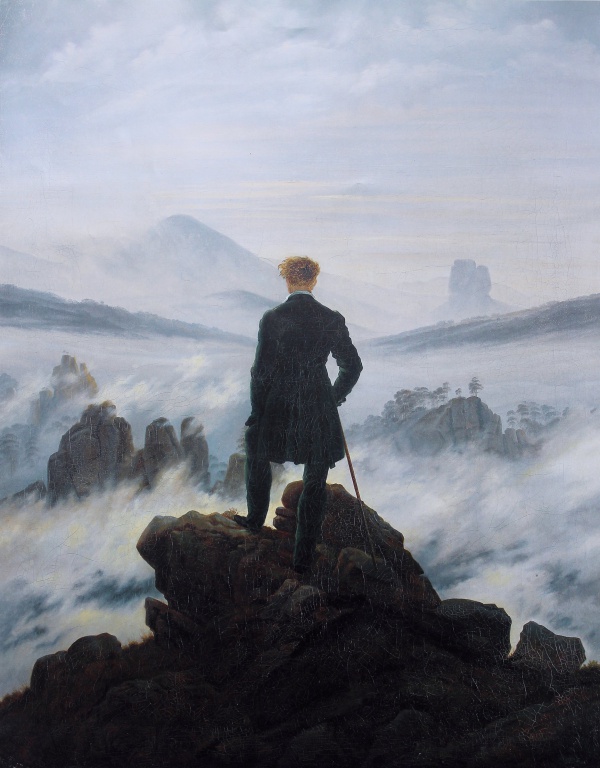Facts About Wanderer above the Sea of Fog
"Wanderer above the Sea of Fog" is an exquisite oil painting created around 1818 by the German Romantic artist Caspar David Friedrich. Hailed as a masterpiece of Romanticism, this artwork beautifully encapsulates the essence of the era.
The painting portrays a young man standing atop a rocky precipice, gazing over a fog-blanketed landscape. Friedrich meticulously crafted this scene using elements from the Elbe Sandstone Mountains, rearranging them in his studio to achieve the final composition. The result is a powerful image that explores themes of self-reflection, the enigma of the future, and the juxtaposition of human presence against the backdrop of nature's grandness.
One of the most striking features of the painting is the figure with his back turned to the viewer, a technique known as Rückenfigur. This invites viewers to step into the man's shoes and partake in his contemplative moment. The title, which can be translated from German to mean either "wanderer" or "hiker" adds even more layers to the interpretation.
"Wanderer above the Sea of Fog" has profoundly influenced perceptions of mountain climbing in Western culture since the Romantic era. It depicts the climber as a visionary, celebrating the triumph of ascending mountain peaks. Today, you can admire this iconic work at the Kunsthalle Hamburg in Germany, where it continues to highlight Friedrich’s extraordinary talent and his ability to evoke profound emotions and contemplation through his art.

 Netherlands
Netherlands